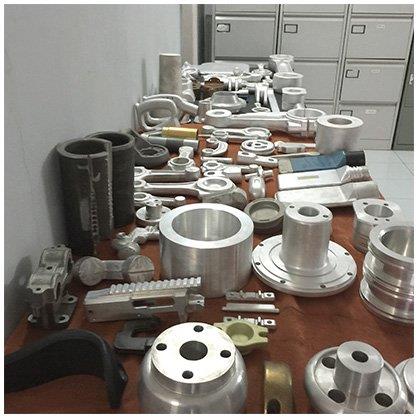
Aluminum Forging Market Size Grows Amid Increasing Demand For High-Strength Components Market Trends & Business Updates
- Share Tweet Pin LinkedIn Email
The Aluminum Forging Market is set to grow significantly, driven by its critical role in enabling lightweight, durable, and high-performance components across various industries. With technological advancements and expanding applications, the market offers lucrative opportunities for stakeholders in the coming decade. Companies must focus on innovation, cost optimization, and sustainability to stay competitive in this dynamic market.
The global aluminum forging market is experiencing robust growth, driven by the increasing demand for lightweight and durable materials across various industries. This article explores the key trends, product types, applications, and regional dynamics shaping the aluminum forging market from 2023 to 2032.
Key Players to Watch: Alcoa Corporation, Bharat Forge, Precision Castparts Corp, OTTO Fuchs KG, and Kaiser Aluminum Corporation are among the leading companies shaping the aluminum forging landscape.
Get more information on“Global Aluminum Forging Market Research Report” by requesting FREE Sample Copy at
Market Overview
Aluminum forging involves shaping aluminum alloys into desired forms using compressive forces. This process enhances the strength, durability, and overall performance of aluminum components, making them ideal for industries such as automotive, aerospace, oil & gas, and construction. The growing preference for lightweight materials to improve energy efficiency and reduce carbon footprints is a significant factor fueling the market's growth.
Market Segmentation
By Product Type
Open Die ForgingOpen die forging is known for its ability to produce large and robust components. It is widely used in heavy industries, particularly in the production of shafts, cylinders, and other large parts. Close Die Forging
Close die forging offers higher precision and better surface finish, making it popular in industries requiring intricate and dimensionally accurate components. Ring-Rolled Forging
This method is extensively used for producing seamless rings, which are critical in aerospace and automotive applications.
By Application
AutomotiveThe automotive sector is a major driver for aluminum forging, with manufacturers seeking lightweight yet strong components to improve fuel efficiency and reduce emissions. Aerospace
Aerospace applications demand high-strength and lightweight materials. Aluminum forging meets these requirements, particularly in the production of aircraft structural components and engine parts. Oil & Gas
Aluminum forged products are used in the oil & gas sector for their corrosion resistance and ability to withstand extreme environments. Construction
The construction industry leverages aluminum forging for structural components due to its strength-to-weight ratio and longevity. Others
This includes marine, industrial machinery, and renewable energy sectors, which are increasingly adopting forged aluminum products.
Regional Analysis
North AmericaNorth America holds a significant share of the aluminum forging market, primarily due to its advanced aerospace and automotive industries. The region's focus on sustainable manufacturing also drives the adoption of forged aluminum products. Europe
Europe is witnessing steady growth owing to stringent regulations on emissions and energy efficiency, prompting industries to adopt lightweight materials. Asia-Pacific
Asia-Pacific is the fastest-growing region, driven by rapid industrialization, urbanization, and the expansion of automotive and aerospace sectors, especially in countries like China, India, and Japan. Latin America and the Middle East & Africa (MEA)
These regions are emerging markets for aluminum forging, supported by growing infrastructure projects and investments in oil & gas exploration.
Key Trends and Drivers
Lightweighting InitiativesThe automotive and aerospace sectors are prioritizing lightweight materials to enhance performance and fuel efficiency, significantly boosting demand for aluminum forging. Sustainability Goals
Aluminum is 100% recyclable, aligning with global sustainability efforts and circular economy initiatives. Technological Advancements
Innovations in forging techniques, such as advanced simulation tools and precision manufacturing, are enhancing the efficiency and quality of aluminum forged products. Rising Investments in Infrastructure
Growing investments in infrastructure development, particularly in developing regions, are increasing the demand for forged aluminum in construction applications.
Browse Global Aluminum Forging Market Research Report with detailed TOC at
Market Challenges
High Initial CostsThe aluminum forging process involves substantial capital investment, which could hinder market growth, especially for small and medium-sized enterprises. Competition from Alternative Materials
Composite materials and advanced steel alloys pose competition, requiring aluminum forging manufacturers to focus on innovation and cost efficiency.
Forecast and Growth Projections
The global aluminum forging market is projected to witness a compound annual growth rate (CAGR) of approximately 6-7% during the forecast period (2023-2032). The market's growth is primarily driven by advancements in manufacturing technologies, rising demand from key industries, and the increasing focus on sustainable materials.

Legal Disclaimer:
MENAFN provides the
information “as is” without warranty of any kind. We do not accept
any responsibility or liability for the accuracy, content, images,
videos, licenses, completeness, legality, or reliability of the information
contained in this article. If you have any complaints or copyright
issues related to this article, kindly contact the provider above.


















Comments
No comment